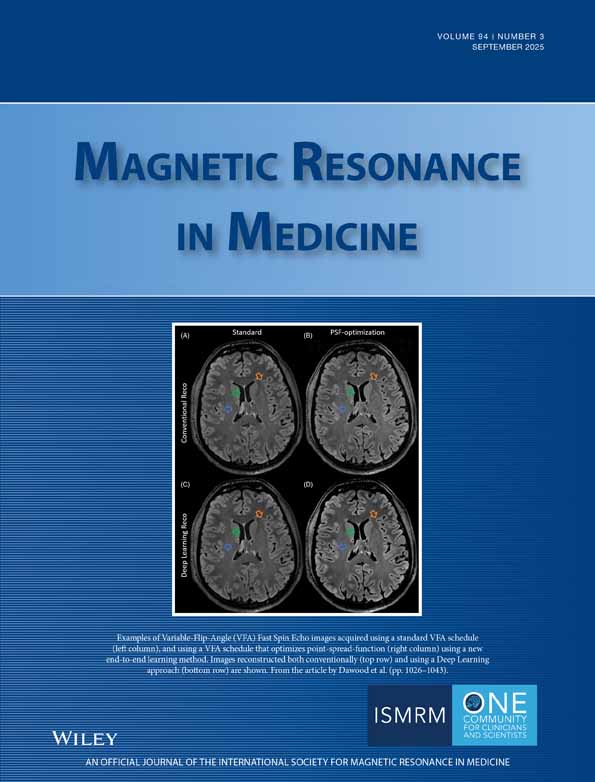Optimization of MR acoustic radiation force imaging (MR-ARFI) for human transcranial focused ultrasound
Gary H. Glover and Kim Butts Pauly contributed equally to this work.
Abstract
Purpose
MR acoustic radiation force imaging (MR-ARFI) is an exceptionally promising technique to non-invasively confirm targeting accuracy and estimate exposure of low-intensity transcranial focused ultrasound applications. Implementing MR-ARFI in the human brain has been hindered by (1) sensitivity to subject motion, and (2) insufficient SNR at low (<1.0 MPa) ultrasound pressures. The purpose of this study was to optimize human MR-ARFI to allow reduced ultrasound exposure while at the same time being robust to bulk and physiological motion.
Methods
We developed a novel timeseries approach to MR-ARFI with a single-shot spiral-out MRI sequence and correction for respiratory and cardiac motion artifacts. An MR-compatible four-element 500 kHz focused ultrasound transducer was coupled to the head and targeted to 60 mm depth in five participants. During spiral scans, two 6 ms focused ultrasound pulses (0.5–0.9 MPa in situ) were delivered in on–off blocks of 25 time frames.
Results
Our method generates ARFI maps that with correction are largely immune to bulk and pulsatile brain motion with reduced scan time (80 s per acquisition). Robust ARFI signals were observed at the expected target in four human participants, using low intensity ultrasound that does not produce significant tissue heating, confirmed both by simulation and MR thermometry.
Conclusion
Single shot spiral MR-ARFI is motion robust in human applications, provides reduction in ultrasound exposure, and reduced scan time, enabling iteration for image-guided targeting. This provide persuasive proof-of-principle that MR-ARFI can be used as a tool to guide ultrasound-based precision neural circuit therapeutics.
CONFLICT OF INTEREST STATEMENT
No potential conflict of interest was reported by the authors.
Open Research
DATA AVAILABILITY STATEMENT
The data that support the findings of this study are available from the corresponding author upon reasonable request.




